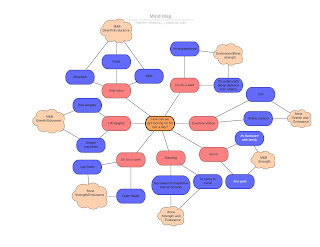Behaviorist Learning Theories
After reading about behaviorism, critical instructional
strategies, and the technical tools we have available to us in our classroom, I
realized their relationship is intertwined with a secure connection to student
success or failure. We, as human beings, desire attention for things we are
working on or towards; this attention can through negative/positive
reinforcement or punishment. Our goal as teachers is to use reinforcement to increase
the chances of approved reaction or behavior, where our instructional
strategies come into play to make sure the students are successful. We want to
be able to reward our students for working collaboratively (Alberta Learning,
2002) and effectively with positive recognition or something as simple as a
“homework pass” (Orey 2010, p. 274). Technology, if used as a data collection
tool, can be used to keep students aware of their process where they can show
and get praise from their parents. The outcomes of our students will depend on
how the teacher uses behaviorism, instructional strategies, and technology.
An example of how instructional strategies and technology
support student learning would be how rubrics work during a cooperative
learning assignment. Having a rubric with clear and precise expectations that
the students use throughout the task, will give the students a feeling of being
able to control the outcome by improving their self-drive to succeed (Pitler,
Hubbell, and Kuhn, 2012).
In my gymnasium, I use both Pavlovian conditioning (as a conditioned stimulus) and
operant conditioning (punisher) in hopes of getting the behaviors I expect from
my students. I use music daily as my conditioned stimulus. Depending on the
type of music played and its volume, my students know the speed and amount of
control they should have. The louder and fast the tempo of the music means a
free expression of how they feel, where softer slower music means moving in
controlled space at slower speeds. At the beginning of each class, I use the
first five minutes to let the kids ‘Burn the Crazy’ before I start the intro of
my class. It gives the students five minutes to act and move as crazy as they
wish, using select equipment. However, if I do not see the appropriate behaviors
as they enter the gymnasium or anytime, I need to explain directions; they lose
that five minutes. I hope that this punishment will decrease these unwanted
behaviors in the future (Orey, 2010). I feel by using these strategies, I am
advocating for an equitable learning environment for all my students (ISTE,
2008).
The sources I have read and researched for this module’s
assignment have taught me strategies to increase the effort of my students as
they journey through their project-based learning project of becoming and
staying physically active. Having read Pitler, Hubbell, and Kuhn’s (2012)
chapter on reinforcing effort has made me realize that I need to make all
feedback “task- or process-oriented” (p.62). With feedback set up, that way
will hopefully have positive effects on their self-motivation to succeed. I
have also learned that having stronger connections with my students and how
they handle success and failure will depend on which reinforcement strategy
used when they are struggling. Each student may handle positive or negative
reinforcements differently, and I need to connect deeper with them to pinpoint
which approach will work best.
References
Pitler, H., Hubbell, E. R., & Kuhn,
M. (2012). Using technology with classroom instruction that works (2nd
ed.). Alexandria, VA: ASCD.
Orey, M. (Ed.). (2010). Emerging perspectives
on learning, teaching, and technology. Retrieved from http://textbookequity.org/Textbooks/Orey_Emergin_Perspectives_Learning.pdf
Alberta Learning. (2002). Instructional
strategies. Retrieved from https://education.alberta.ca/media/482311/is.pdf

